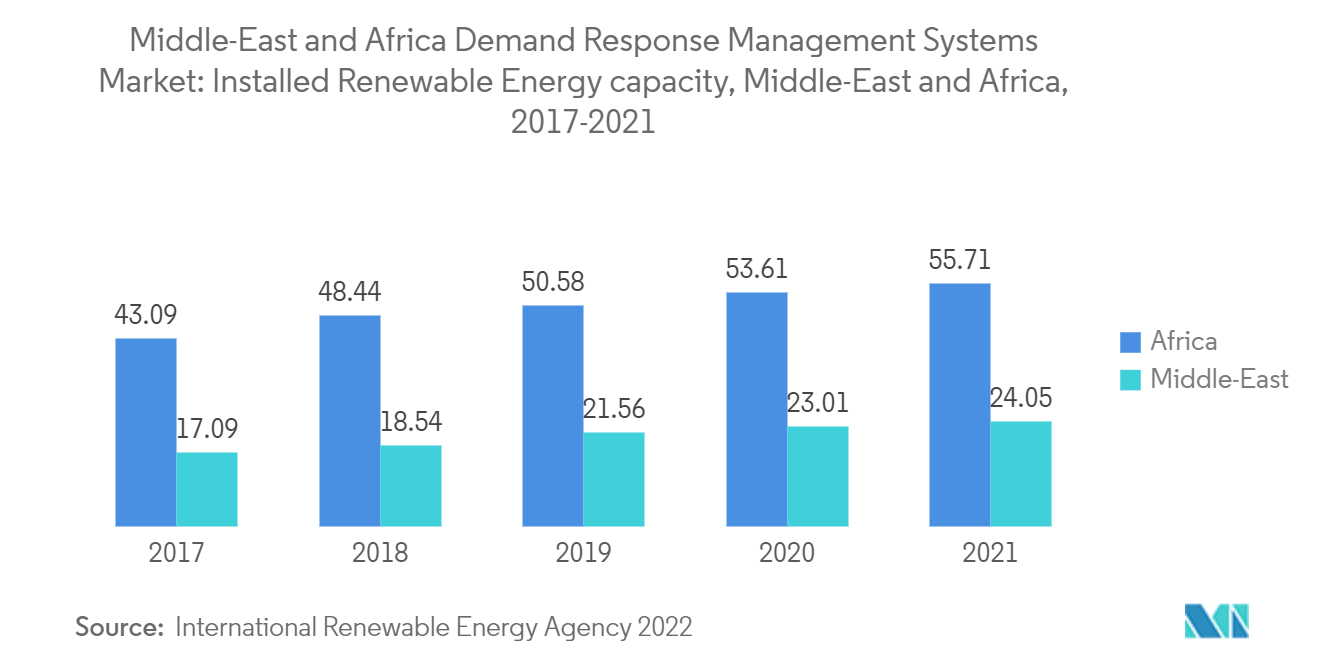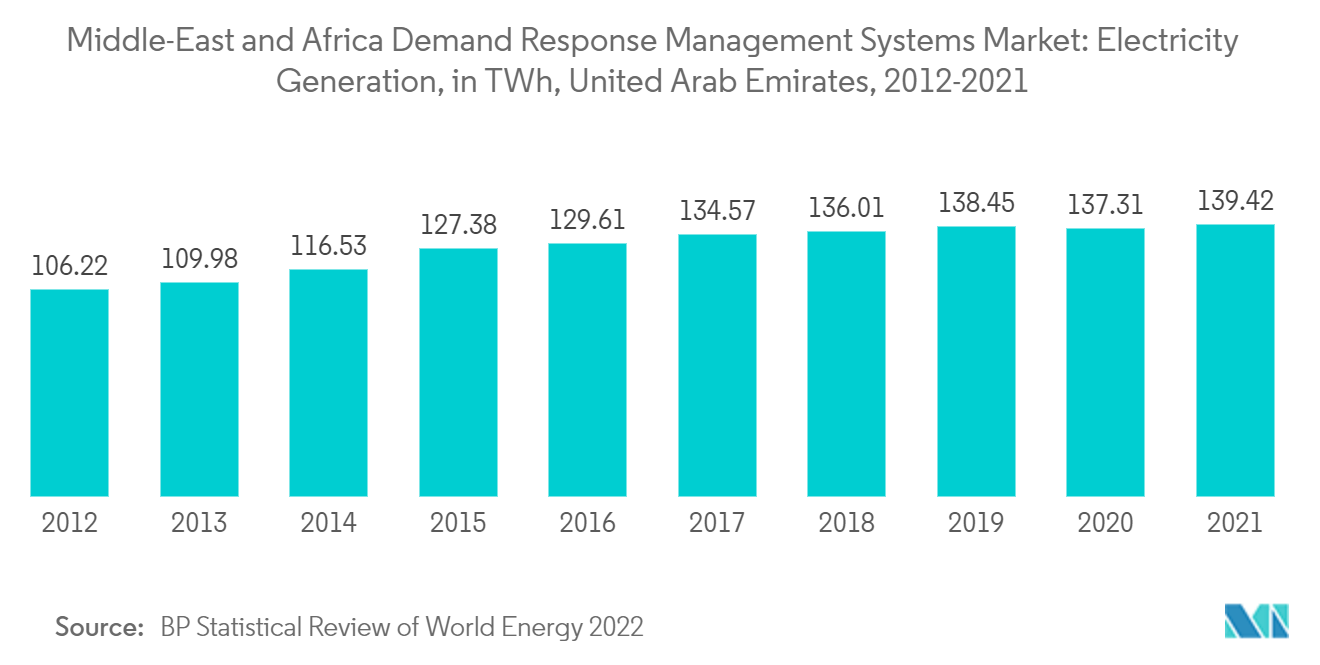Market Trends of Middle-East and Africa Demand Response Management Systems Industry
This section covers the major market trends shaping the MEA Demand Response Management Systems Market according to our research experts:
Automated Demand Response System to Grow at the Fastest Rate
- Industrial demand response is a dynamic energy infrastructure management program designed to support the stability of the electricity grid, as well as meet the globally growing demand for energy with the assistance of large and very large energy users in both the industrial and commercial sectors who agree to switch off certain production processes or turn down certain electrical loads during periods of peak demand.
- Demand-side management is the need of the hour for any grid. With a rise in smart grid technologies and automated demand response systems, DRMS is a key demand-side management strategy that is expected to provide a cost-effective alternative to traditional supply-side solutions to address the growing electricity demand during peak load or when prices are high.
- Additionally, as grid integration of renewable energy is growing rapidly, it is expected to mandate smart grids to provide grid-firming capacity while integrating energy generation from variable sources such as wind and solar.
- As of 2021, according to International Renewable Energy Agency, the Middle East had a total installed renewable capacity of nearly 24 GW, up from 13.6 GW in 2012, and Africa had a total installed renewable capacity of 55.7 GW from 28.45 GW in 2012.
- Renewable energy capacities are expected to grow even further. Such large-scale increase in renewable energy capacity has facilitated the requirement for new automated systems to stabilize grid operation.
- Therefore, the Middle-East and African demand response management systems market is expected to grow due to the ability of the automated demand response system to control electricity consumption, allowing customers to manage energy consumption at times of peak demand automatically.

United Arab Emirates to Dominate the Market
- The market for demand response management systems in the Middle-East and African region is expected to witness significant growth, majorly in the United Arab Emirates, during the forecast period.
- The United Arab Emirates has 7% of the global proven oil reserves, i.e., about 105 billion barrels and 73 trillion cubic feet of conventional gas.
- As of 2021, the total electricity generation in the country was about 139.4 TWh. Natural gas-fired power plants majorly power the country. In 2021, about 98% of electricity was generated by natural gas-fired plants. Moreover, the share of oil and natural gas in primary energy consumption in the same year was staggering at 98.87%. However, the country has committed to producing at least 25% by 2030.
- The peak electricity demand has been increasing on account of high disposable incomes, hot summers, and the widespread use of electrical appliances in the country. The country has experienced shortages in power availability due to rapid economic growth, a situation that has ebbed in recent years. To manage this mismatch in electricity demand and supply, large customers were instructed to undertake administratively rationed, uncompensated load reductions to reduce peak demand.
- In addition, the country has focused on developing world-class power infrastructure to become a power exporter to other GCC nations. DRMS has the potential to aid the United Arab Emirates in optimizing its consumption and improving the efficiency of allocating unused energy to export.
- The country has focused on massive capacity addition in the power sector by developing nuclear and solar power plants. It is likely to become the first MENA country to produce solar power on such a large scale. Supported by an increase in capacity and the integration of renewable in the energy mix, the market outlook for DRMS is estimated to be positive over the coming years.
- In November 2022, the Abu Dhabi Department of Economic Development (ADDED) expanded the Energy Tariff Incentive Programme (ETIP 2.0) by offering preferential rates for gas and electricity to the industrial sector based on eligibility criteria that include economic impact, Emiratisation rate, and energy management efficiency. Such measures are expected to spur industry players into investing in better demand response management systems to improve energy efficiency during the forecast period.
- Therefore, factors such as increasing efforts to modernize the power sector across the country, investments, and government policies, are expected to drive the market studied during the forecast period.


